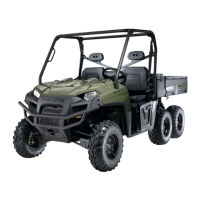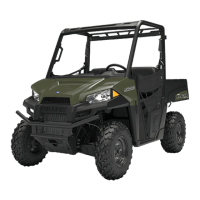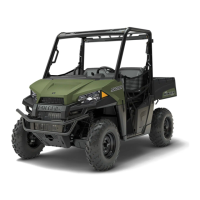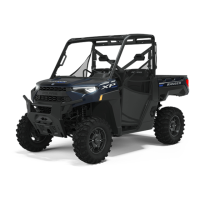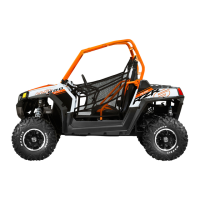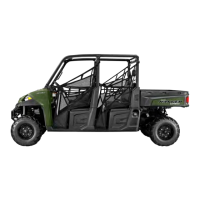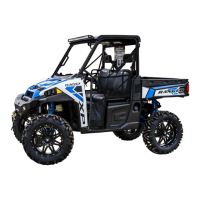BRAKES
9.24
Measure
Thickness
Rear Brake
Disc
Front View of Brake Disc
Rear Brake Disc
Brake Disc Thickness
Service Limit .140² (3.556 mm)
New .150--.165² (3.81--4.19 mm)
Brake Disc Thickness Variance
Service Limit .002² (.051 mm)
difference between measurements
3. Mount dial indicator and measure disc runout.
Replace the disc if runout exceeds specifications.
Brake Disc Runout
Service Limit .005² (.127 mm)
4. Install brake line and tighten with a flare nut
wrench.
5. Follow bleeding procedure outlined on Pages
9.6--9.5 of this section.
6. Field test unit for proper braking action before
putting into service. Inspect for fluid leaks and
firm brakes. Make sure the brake is not dragging
when pedal is released. If the brake drags,
re-check assembly and installation.
7. Dirty/contaminated friction pads
8. Improper alignment
9. Worn disc
10. Worn disc splines
TROUBLESHOOTING
Brakes Squeal
Poor Brake Performance
S Air in system
S Water in system (brake fluid
contaminated)
S Caliper/disc misaligned
S Caliper dirty or damaged
S Brake line damaged or lining
ruptured
S Worn disc and/or friction pads
S Incorrectly adjusted stationary pad
S Worn or damaged master cylinder or
components
Pedal Vibration
S Disc damaged
S Disc worn (runout or thickness
variance exceeds service limit)
Caliper Overheats (Brakes Drag)
S Compensating port plugged
S Pad clearance set incorrectly
S Parking brake lever incorrectly
adjusted
S Brake pedal binding or unable to
return fully
S Parking brake left on
S Residue build up under caliper seals
S Operator riding brakes
Brakes Lock
S Alignment of caliper to disc
S Caliper pistons sticking
S Improper assembly of brake system
components

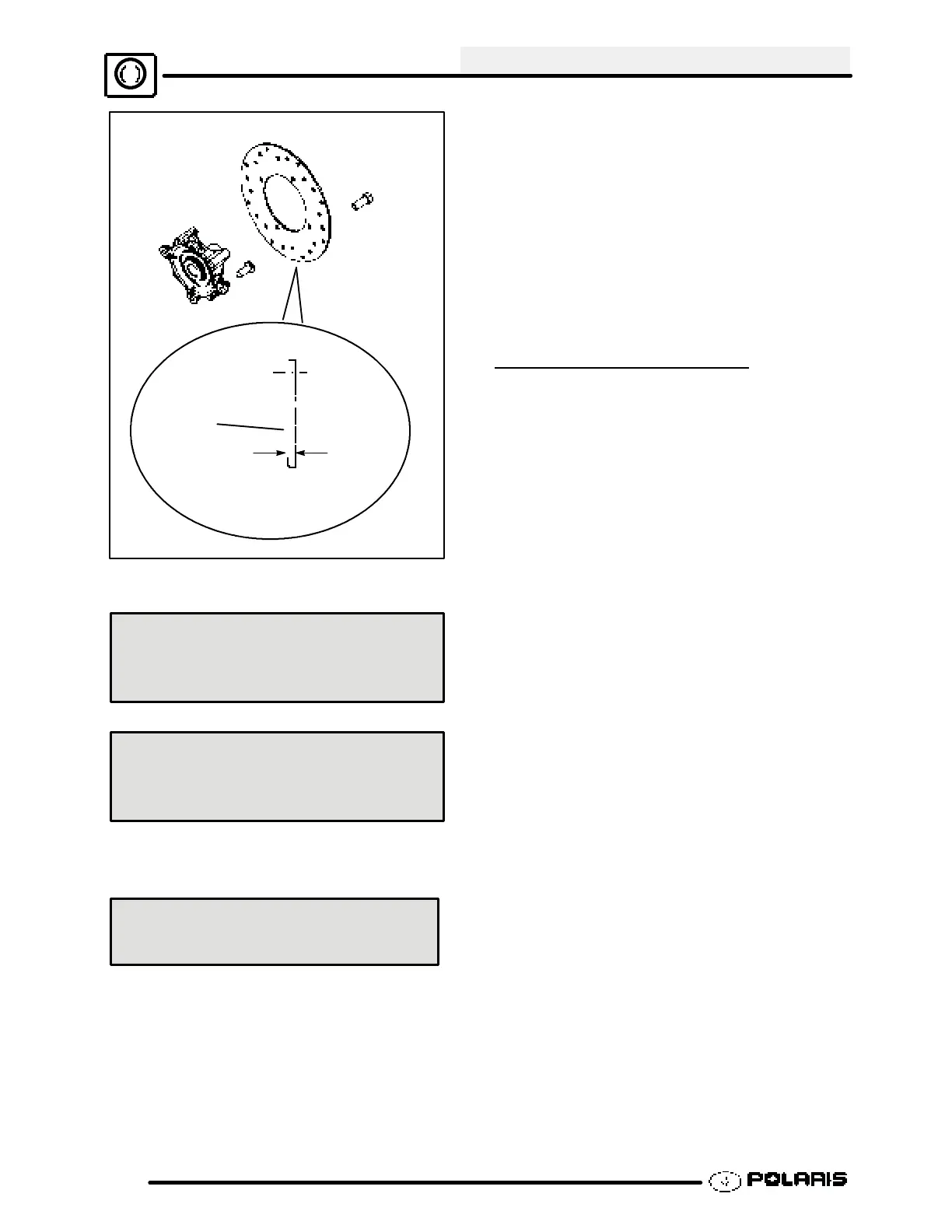